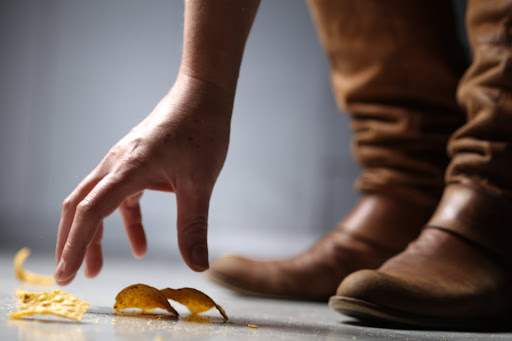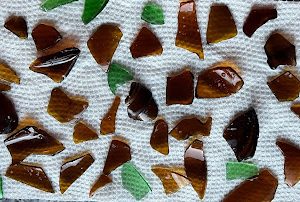Is the Five Second Rule Real?

Is the “five second rule” a rule to live by? Or just a myth? (New York Times)
I never thought I would be writing a science article; however, something has been irritating me for years: the “five second rule.” If you’ve somehow never heard of this, the “five second rule” is when you drop food on the floor and then proceed to pick it up and eat it because “as long as it’s been on the floor for under five seconds, it’s safe to eat.” Even as a little kid, I never believed in this rule. I would physically cringe as I watched kids in my class pick food up off of the lunchroom floor and eat it. As they stared back at my disgusted face, they would say “five second rule” while chewing. Just the other day, as I watched a boy my age do that exact same thing, I decided that once and for all I would get to the bottom of this. The five second rule: is it real?
Out of curiosity, I began researching by asking ten students in my class about whether or not they believe in this rule. Out of the ten, five students expressed that they do believe in the five second rule. However, many said it depends on the type of food. One student admitted that it depends on how hungry they are, and four students don’t believe in the five second rule at all. The responses were more divided than I expected. I was surprised to say the least; however, I still wanted to research whether I had been wrong all along. Maybe I’ve just been judgmental.
According to Houston Methodist Medical Center: “A 2006 study found that a particular diarrhea-causing bacteria (Salmonella) can transfer from floor to food (bologna, in this case) after just five seconds of exposure. The contamination happened almost immediately, in fact.” Reading that food contamination happens immediately when hitting the floor definitely validated my opinion. They continued with: “This means that five seconds is plenty of time for food that falls on the floor to become contaminated — essentially disproving the rule.” I was pleased to read this.
The article continued by exploring whether the rule depends on the type of food that is hitting the floor. They write: “A 2016 study looking at how contaminated different types of food (watermelon, bread, buttered bread and gummy candy) were after being dropped found that watermelon had the most germs on it when it came back from the floor — implying that perhaps the flatter and wetter a food item, the easier it gets contaminated. Gummy candy was the least contaminated of the four food items, and the researchers hypothesized this was due to the less uniform surface of the candy. Bread and buttered bread were contaminated at about the same rate.” While there was still bacteria on the least contaminated foods, this study proves that some foods are safer to eat than others after hitting the floor, agreeing with 50% of the people I initially asked.
WebMD shared a study done by a college student. According to the study: “Jillian swabbed the floors around the University in the lab, hall, dormitory, and cafeteria to see how many organisms we could isolate.” Agle told WebMD: “We examined the swabs, and there were very few microorganisms. That surprised me. I told her to do it again. The results were the same.”
Agle has since earned her doctoral degree and is a scientist in new product development for Rich Foods in Buffalo, N.Y. Agle said: “I think the floors were so clean, from a microbiological point of view, because floors are dry, and most pathogens like salmonella, listeria, or E. coli can’t survive without moisture.”’
Web MD went on to describe a study that was conducted where they dropped cookies and gummy bears on different surfaces with different amounts of bacteria. They wrote: ‘”We did see a transfer of germs before five seconds. We were dealing with a large number of cells.” Additionally, two experts told WebMD you should never eat food that’s fallen on the floor. Although it is rare, foodborne illness can lead to fevers and flu-like symptoms. While the WebMD study points to floors generally being clean enough, if there were harmful E. coli or other bacteria, it would transfer in less than five seconds. Though living by the “five second rule” will probably not affect you too badly, it is still a myth.
By Chloe Stefani ‘24, Fashion Editor
24cstefani@montroseschool.org















